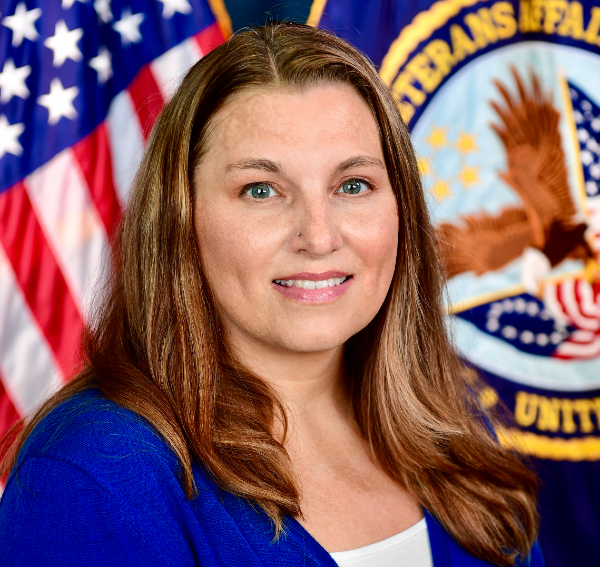How Veterans Affairs Nurses Fight Infection
Non-ventilator-hospital associated pneumonia prevention is quickly becoming the hot topic among infection preventionists.
According to the American Journal of Infection Control, one of the most common health care-associated infections (HAIs) is non-ventilator associated pneumonia.Historically, ventilator associated pneumonia (VAP) was a major infection prevention focus as it was reportable to the Centers for Disease Control and Prevention’s (CDC) National Healthcare Safety Network (NHSN) and measures to prevent it were well defined standards of care.
Conversely, there were no guidelines or evidence-based practices in place to decrease the incidence of non-ventilator hospital acquired pneumonias (NV-HAP), even though it accounts for more than 60% of all hospital-acquired pneumonias. In 2019, the Association for Professionals in Infection Control and Epidemiology (APIC) released a position statement that encouraged infection preventionists (IPs) to establish the baseline prevalence of NV-HAP in their facilities.

The statement defined many challenges including: “lack of prevention strategies, no standardized case definitions, inadequate oral care equipment on units and health care providers lack of understanding of the relationship between the oral cavity and the onset of pneumonia.” Often, patients aspirate bacteria from the mouth into the lungs resulting in pneumonia during sleep. The more bacteria in the mouth, the more chance of a patient developing pneumonia.
Recently, health care facilities under the Department of Veteran’s Affairs began to track, and report non-ventilator hospital acquired pneumonia as part of its routine HAI surveillance metrics.
Robbie Hilliard, RN, MSN, CIC

The importance of this information is monumental as more surveillance data is beginning to surface highlighting the incidence of NV-HAP. According to the Centers for Disease Control and Prevention, the incidence of NV-HAP is almost twice the incidence of VAP. NV-HAP prevention projects have been few and far between, until now.
Shannon Munro, PhD, APARN, BC, NP, and a nurse researcher at Salem VAMC, collaborated with a team of researchers to develop a step-by-step implementation process to prevent NV-HAP.This nurse-led initiative has several features that are important for reducing the incident of NV-HAP. Education, resources, documentation, and oral care practices with support of the dental team are all essential parts of the program. Munro’s research resulted in an incidence rate reduction of NV-HAP on the long-term care nursing units by 92% from the baseline.
In 2016, the initiative was selected as a Diffusion of Excellence “Gold Status Practice” in the Undersecretary for Health’s second Shark Tank Competition. Funding to implement and expand within VA hospitals was awarded and the initiative has since been adopted by 155 VA facilities across the nation. The initiative also won the 2020 Gears of Government President’s Award for decreasing health care costs and saving lives.
This hospital acquired pneumonia prevention initiative, called “H.A.P.P.E.N” (Hospital Acquired Pneumonia Prevention by Engaging Nurses to complete oral care), focuses on preventing hospital acquired pneumonia by reducing bacterial burden in the mouth with standardized oral health care. The initiative has specific steps that aid facilities in determining what their baseline in oral health care currently is. Facilities began by analyzing their current processes and realized there were many opportunities for improvement in standardized oral health care. When implementing the program, participants often found that their facility lacked American Dental Association approved toothbrushes, toothpaste, and basic oral hygiene supplies such as dental floss and mouthwash. The frequency of oral health care was also lacking in many facilities if it existed at all, as was documentation of oral health care practices.
The program’s evidence-based practices provided the foundation of prevention strategies that collaborated with interdisciplinary teams focused on preventing NV-HAP in high-risk patients. Dental hygienist participated by providing oral exams for patients and documenting current states of oral health. Education on proper oral hygiene techniques, such as tooth brushing twice a day, especially at bedtime, was provided to front line nursing staff.
Denture care was also included. Documentation templates were updated to enhance capturing data to effectively change/adjust as needed. Infection control departments began to monitor baseline NV-HAP rates and would subsequently follow up monthly with submitting any new cases of pneumonia by unit. Logistics departments aided in obtaining commodities and helping to stock units with necessary tools. Nursing staff were the main stakeholders that the project aimed to engage. Assigning clear expectations and defining responsibilities in the project charter aided in its success. This team approach was clearly an effective method when looking at the outcome data.
There are many impressive features about the H.A.P.P.E.N. initiative. The implementation guide/toolkit offers many useful templates, patient education documents, competency checklists and a step-by-step guide to implementation. The most impressive information given was the impact of the project. Implementation of the initiative at the Salem VAMC Community Living Center (long-term care nursing unit) yielded a decrease in the incidence rate of NV-HAP (by 92%) from 105 to 8.3 cases per 1,000 bed days of care in one year.This was an estimated cost avoidance of $1.76M and 8 veteran’s lives saved. This is a huge patient impact that would impress any data driven health care model. The project then transitioned to the acute care unit at the facility and had subsequent similar successful outcomes.
The bottom line is that VA hospitals who implemented the program have reported a decrease in NV-HAP rates of 40%-60%. Implementing the program is not costly and does not require a lot of time. Recognizing consistent, standardized oral care as a modifiable risk factor in NV-HAP cases and modifying that factor is key to prevention. IPs are always looking for ways to decrease any type of hospital associated infection. This initiative not only lowered the incidence of NV-HAP but yielded large cost avoidances by decreasing length of stays, improving mortality, and improving quality of life for patients. VAP reduction efforts by the nursing profession in general have resulted in successfully lowering infection rates. NV-HAP is now viewed as the bigger threat to patient safety.With mortality estimated to be as high as 31% and the increased incidence of NV-HAP versus VAP, regulatory agencies may not be far from requiring health care facilities to intervene.
Robbie Hilliard, MSN, RN, CIC, is the Infection Prevention Coordinator at Carl Vinson V.A. Medical Center in Dublin, Georgia. To learn more about H.A.P.P.E.N and its impact on Veterans: https://www.va.gov/INNOVATIONECOSYSTEM/views/solutions/happen.html.
Phage Therapy’s Future: Tackling Antimicrobial Resistance With Precision Viruses
April 24th 2025Bacteriophage therapy presents a promising alternative to antibiotics, especially as antimicrobial resistance continues to increase. Dr. Ran Nir-Paz discusses its potential, challenges, and future applications in this technology.
Robust infectious disease surveillance, including rapid subtyping of influenza A, is essential for early detection, containment, and public health reporting of novel viral threats.